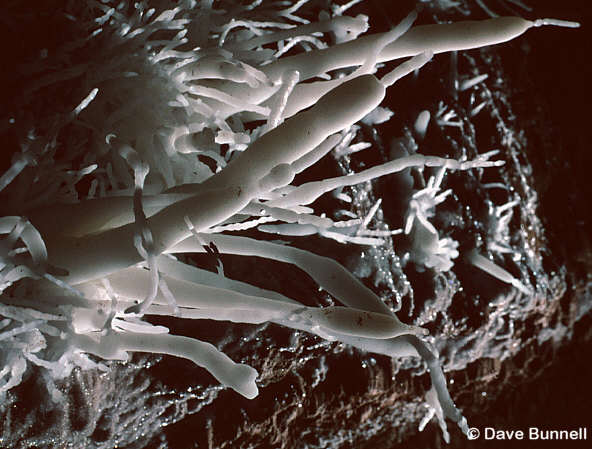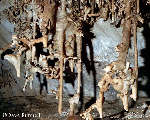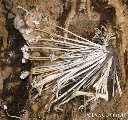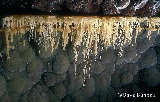
|
Helictites are contorted depositional speleothems which
grow in any direction, seemingly defying gravity. They occur in many
forms from tiny filaments (as in the middle photo) to thick, antler-like
forms (bottom photo). Most helictites are formed from calcite. Helictites are a very diverse group of speleothems,
likely because different factors influence them. There is a very rare
category that forms underwater, best known from Lechuguilla Cave, New
Mexico. One show cave in California, Black Chasm Cavern, was designated
a National Natural Landmark because of this. Visit our special
tribute page to this cave's diverse helictites. |



 |
 |
 |
 beaded helictites |
 directional helictites |
 subaqueous helictites |
Click on a thumbnail to see more images of helictites
![]()
| Back to: | |
 |
Created: June 19, 1995 Last Updated: May 4, 2005 Author: Dave Bunnell |